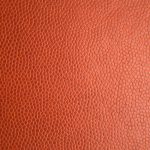If you want a fabric that’s durable, wrinkle-resistant, and vividly textured, bouclé polyester might be a good fit. It offers a cozy, stylish look and holds color well but can feel a bit rough on sensitive skin and isn’t very breathable. It requires gentle care to avoid snags and may have environmental downsides due to its synthetic nature. If you’re curious about its uses, care, and whether it suits your needs, there’s more you’ll want to know.
Table of Contents
Key Takeaways
- Bouclé polyester offers durability, wrinkle resistance, and vibrant color retention, making it practical for long-term use in upholstery and fashion.
- Its unique textured loops provide a cozy, visually appealing surface but may feel rough and less breathable against sensitive skin.
- The fabric requires gentle care, including cold water washing and air drying, to avoid snagging, pulls, or damage to its loops.
- It is competitively priced but has a high environmental impact due to petroleum-based production and limited recyclability.
- Bouclé polyester is ideal for decorative and outerwear applications but may be less comfortable in hot climates and high-traffic areas.
Understanding Bouclé Polyester Fabric
Bouclé polyester fabric combines the textured loops of bouclé yarn with the durability of polyester fibers. When you choose this fabric, you’re getting a blend that’s both visually interesting and strong.
Polyester adds resilience, making the fabric resistant to wrinkles, shrinking, and stretching. You’ll find bouclé polyester isn’t just about looks—it’s practical for everyday use.
It often features tightly woven loops that give it a distinctive feel without compromising durability. Since it’s synthetic, it dries quickly and holds color well, so your items won’t fade easily.
You might notice that it’s lightweight, yet sturdier than many natural fabrics. Overall, understanding bouclé polyester means recognizing it as a fabric that balances style with function, perfect for those who want durability without sacrificing design.
The Unique Texture of Bouclé Polyester
The distinctive texture of polyester bouclé immediately catches your eye and invites touch. You’ll notice its looped yarns create a nubby, almost pebble-like surface that adds visual depth and tactile interest.
This texture gives bouclé polyester a cozy, inviting feel, perfect for upholstery or fashion pieces where comfort matters. When you run your fingers over it, you experience a subtle unevenness that sets it apart from smoother fabrics.
This unique surface not only enhances aesthetics but also helps disguise minor stains or wear, making it practical for everyday use. If you appreciate fabrics that combine style with a distinctive touch, bouclé polyester offers a textured charm that stands out without overwhelming your design choices.
Durability and Longevity of Bouclé Polyester
While the textured surface of polyester bouclé adds charm and practicality, you’ll also want to contemplate how well the fabric holds up over time.
Luckily, polyester is known for its strength and resistance to wear, so bouclé polyester generally offers good durability. It resists stretching, shrinking, and wrinkling, which means your furniture or garments can maintain their shape longer.
However, the looped yarns in bouclé can sometimes snag, especially if you have pets or frequently brush against rough surfaces. To maximize longevity, you should avoid heavy abrasion and clean the fabric gently.
With proper care, bouclé polyester can stay vibrant and intact for years, making it a smart choice if you want a textured look without sacrificing durability.
Comfort and Feel Against the Skin
When you touch bouclé polyester, you’ll notice its unique texture that can feel soft but sometimes slightly rough.
It offers warmth, though its breathability mightn’t suit every climate or skin type.
If you have sensitive skin, you’ll want to contemplate how this fabric interacts with your comfort throughout the day.
Texture and Softness
Bouclé polyester offers a distinctive texture that feels both cozy and inviting against your skin. You’ll notice its unique looped yarns create a tactile surface that adds depth and interest, making it pleasant to touch.
Unlike flat fabrics, bouclé’s nubby texture provides a subtle softness that enhances comfort without overwhelming your senses. You won’t find it scratchy or harsh; instead, it delivers a gentle, cushioned feel that’s perfect for upholstery or clothing.
However, keep in mind that the texture’s complexity means it might catch or snag more easily than smooth fabrics, so handle it with care.
Breathability and Warmth
The cozy texture of bouclé polyester naturally influences how it feels against your skin regarding breathability and warmth. While the fabric’s looped fibers trap air, providing decent insulation, it doesn’t breathe as well as natural fibers like cotton or wool.
You might find it warm enough for cooler environments but less comfortable when temperatures rise or you’re active. The synthetic nature of polyester means moisture can get trapped, making the fabric feel less breathable and potentially clammy during extended wear.
That said, bouclé polyester’s warmth makes it a solid choice for outerwear or upholstery in chillier settings. If you prioritize breathability for daily wear in varying climates, you may want to take into account blends or other materials alongside bouclé polyester.
Skin Sensitivity Considerations
Anyone with sensitive skin might find bouclé polyester a mixed experience. The fabric’s textured loops can sometimes feel rough or itchy against your skin, especially if you’re prone to irritation.
Unlike natural fibers, polyester doesn’t breathe as well, which may cause you to sweat more and feel uncomfortable during extended wear. However, many manufacturers blend bouclé polyester with softer materials to improve comfort.
If you want to try bouclé polyester, consider wearing it over a smooth base layer to prevent direct contact with your skin. Testing a small patch before committing to a full garment can help you avoid discomfort.
Ultimately, bouclé polyester’s comfort depends on your skin’s sensitivity and the fabric’s specific blend and construction.
Maintenance and Cleaning Tips
You’ll want to treat bouclé polyester carefully to keep it looking fresh.
Learn the best stain removal techniques and follow proper washing instructions to avoid damage.
Also, knowing how to dry and store it will help maintain its texture and durability.
Stain Removal Techniques
Although bouclé polyester is known for its durability, spills and stains can still happen, and treating them promptly makes all the difference.
When you notice a stain, gently blot it with a clean cloth instead of rubbing, which can damage the textured loops. For most stains, use a mild detergent mixed with water and apply it with a soft cloth or sponge. Test the solution on a hidden area first to avoid discoloration.
Avoid harsh chemicals or bleach, as they can weaken the fibers. If the stain persists, consider using a specialized upholstery cleaner designed for synthetic fabrics.
Regularly vacuum your bouclé polyester to prevent dirt buildup, which can make stains harder to remove. Quick and careful attention keeps your fabric looking fresh and vibrant longer.
Washing Instructions
When caring for bouclé polyester, following proper washing instructions guarantees the fabric stays soft and durable. You should always check the care label first, as some bouclé polyester blends require gentle handling.
Generally, wash your bouclé polyester items in cold water using a mild detergent. Avoid bleach and fabric softeners, as they can damage the texture and fibers. Use a delicate or gentle cycle on your washing machine to prevent excessive agitation that might cause fraying or pilling.
It’s best to turn garments inside out to protect the loops and texture during washing. If hand washing, gently swish the fabric in cold water without wringing or twisting to maintain its shape.
Following these steps helps preserve bouclé polyester’s unique look and feel.
Drying and Storage
Since bouclé polyester is prone to damage from heat and rough handling, drying it carefully is essential to maintain its texture.
You should always air-dry your bouclé polyester items by laying them flat on a clean towel or drying rack. Avoid using a tumble dryer, as the heat can cause the fibers to shrink or lose their looped texture.
Also, keep your bouclé polyester away from direct sunlight while drying to prevent fading.
When storing, fold your bouclé garments gently to avoid crushing the loops, and keep them in a breathable fabric bag or drawer. Avoid hanging bouclé polyester for long periods, as it can stretch out the fabric.
Proper drying and storage will help your bouclé polyester look fresh and last longer.
Cost Considerations of Bouclé Polyester
Because bouclé polyester combines durability with a unique textured appearance, you’ll often find it priced competitively compared to natural fibers. When budgeting for your project, you’ll appreciate that this fabric offers style without a steep price tag. However, prices can vary based on weave complexity and quality. Here’s a quick look at typical costs you might encounter:
| Cost Factor | Price Range (per yard) |
|---|---|
| Basic bouclé polyester | $10 – $20 |
| Premium blend | $20 – $35 |
| Upholstery-grade | $25 – $40 |
| Designer labels | $35 – $60 |
| Bulk purchase savings | 5% – 15% off |
Knowing these ranges helps you decide where to invest for the best mix of texture and value.
Environmental Impact and Sustainability
When you choose bouclé polyester, you should consider its carbon footprint during production and how it impacts the environment.
You’ll also want to think about whether it can be recycled or if it breaks down naturally over time.
Plus, keep in mind the resources needed to make it and how that affects sustainability efforts.
Production Carbon Footprint
Although bouclé polyester offers durability and style, its production carries a significant carbon footprint that you should consider.
Polyester is derived from petroleum, a non-renewable resource, and its manufacturing process consumes high amounts of energy, mostly from fossil fuels. This results in substantial greenhouse gas emissions contributing to climate change.
Additionally, producing bouclé polyester involves complex chemical treatments and spinning processes that increase energy use compared to natural fibers.
While the fabric’s longevity can reduce waste, the upfront environmental cost from production remains high.
If you’re aiming to lower your carbon footprint, it’s important to weigh the energy-intensive nature of bouclé polyester’s creation against its benefits.
Being aware of these factors helps you make more informed, eco-conscious choices when selecting textiles.
Recycling and Biodegradability
The environmental cost of producing bouclé polyester extends beyond its carbon footprint.
When you consider recycling and biodegradability, you face some challenges. First, bouclé polyester isn’t biodegradable, meaning it lingers in landfills for decades, contributing to pollution.
Second, recycling options are limited because the fabric often mixes polyester with other fibers, complicating the sorting and reprocessing.
Third, while some recycling technologies exist, they’re not widespread, so you’ll likely find most bouclé polyester ends up as waste rather than a new product.
If you want to reduce your environmental impact, you might need to look for blends or alternatives with better recycling infrastructure or biodegradable properties.
Understanding these factors helps you make a more informed, sustainable choice.
Resource Consumption Concerns
Because bouclé polyester relies heavily on petroleum-based materials, its production demands significant energy and water resources.
When you choose bouclé polyester, you’re indirectly supporting processes that contribute to greenhouse gas emissions and resource depletion.
Unlike natural fibers, which can often be grown sustainably, synthetic fibers like bouclé polyester depend on fossil fuels, making their environmental footprint larger.
You mightn’t see the impact immediately, but these resource consumption concerns add up over time, affecting ecosystems and climate health.
If you’re aiming for sustainability, you’ll want to weigh these factors carefully.
While bouclé polyester offers durability and easy care, its environmental cost in resource use means it’s not the greenest choice available.
Considering alternatives or blends might help reduce your overall ecological impact.
Ideal Uses for Bouclé Polyester
When you choose bouclé polyester, you tap into a fabric that combines durability with a unique textured appearance, making it perfect for various applications.
Choosing bouclé polyester means embracing a durable fabric with a unique, textured look perfect for many uses.
You’ll find it ideal for projects where both style and strength matter. Here are three top uses for bouclé polyester:
- Upholstery: Its durability and texture add visual interest and withstand daily wear on sofas and chairs.
- Outerwear: The fabric’s warmth and resistance to wrinkles make it great for jackets and coats.
- Decorative Accents: Throw pillows and blankets benefit from bouclé’s cozy feel and distinctive loops, enhancing any room’s ambiance.
With these uses, you get both practical benefits and aesthetic appeal from bouclé polyester, making it a versatile choice for your home and wardrobe.
Common Drawbacks to Consider
Although bouclé polyester offers many advantages, you should be aware of some common drawbacks before choosing it.
First, its textured surface can snag easily, especially in high-traffic areas or if you have pets. This means you’ll need to handle it with care to avoid pulls or damages.
Also, while polyester is durable, bouclé’s looped yarns may loosen over time, causing the fabric to look worn. You might find it less breathable than natural fibers, so it could feel warmer in hot conditions.
Additionally, cleaning bouclé polyester requires attention; improper washing can cause shrinkage or matting of the loops. Knowing these limitations helps you decide if bouclé polyester fits your lifestyle and maintenance preferences.
Comparing Bouclé Polyester With Other Fabrics
If you’re deciding between bouclé polyester and other fabrics, it helps to understand how they differ in texture, durability, and care.
Bouclé polyester offers a unique looped texture that stands out compared to smoother fabrics like cotton or silk. Here’s how it stacks up:
Bouclé polyester features a distinctive looped texture that contrasts beautifully with the smoothness of cotton or silk.
- Texture: Bouclé polyester has a bumpy, tactile feel, unlike the sleekness of silk or the softness of cotton.
- Durability: It’s more resistant to wear and tear than delicate fabrics but may snag easier than tightly woven textiles.
- Care: Bouclé polyester is generally easier to maintain than natural fibers, often requiring less delicate washing and drying.
Knowing these differences helps you pick a fabric that suits your style, lifestyle, and maintenance preferences perfectly.
Frequently Asked Questions
Can Bouclé Polyester Be Used for Outdoor Furniture?
You can use bouclé polyester for outdoor furniture, but it’s not ideal. It’s stylish and durable indoors, yet outdoors, it may fade or wear quickly without proper protection from weather and UV exposure.
Is Bouclé Polyester Hypoallergenic?
Bouclé polyester isn’t naturally hypoallergenic, but it’s less likely to trigger allergies than wool. If you’re sensitive, you might still experience irritation. Regular cleaning helps reduce dust and allergens, keeping your space more comfortable.
How Does Bouclé Polyester React to High Humidity?
Think of bouclé polyester like a sponge in a steamy bathroom—it resists moisture well, so you won’t find it soggy or shrinking. It holds up in high humidity, keeping its textured charm and shape intact.
Can Bouclé Polyester Be Easily Dyed Different Colors?
You can dye bouclé polyester, but it’s not always easy because polyester resists many dyes. You’ll need specialized disperse dyes and heat to get vibrant, lasting colors. Regular fabric dyes often won’t work well.
Is Bouclé Polyester Safe for Children’S Clothing?
You’d think bouclé polyester is made of clouds, but it’s actually safe for kids’ clothing! It’s durable, hypoallergenic, and easy to clean, so your little ones can play without worry or irritation.
- Does Chiffon Fabric Stink - July 15, 2025
- Does Chiffon Fabric Affect the Economy - July 15, 2025
- Does Cotton Fabric Have a Nap - July 15, 2025







